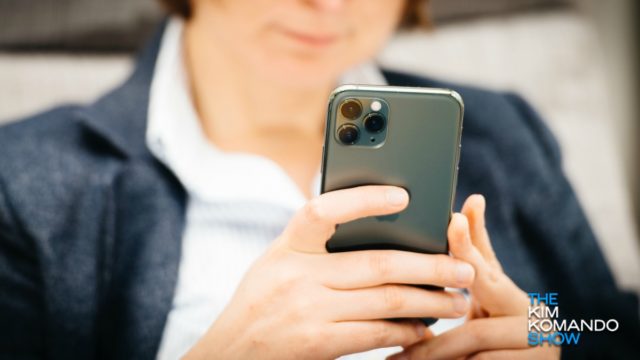How to detect if your iPhone has viruses

Adware and virus-infected malware are everywhere; taking over your computers, smartphones, tablets and just about anything else that can be connected to the internet.
It’s a problem so rampant these days, I wouldn’t be surprised if they’re also hiding under your bed or in your closet.
OK, that last part was an exaggeration, but if you look at a lot of our recent stories about adware, you’ll see a big area of focus has been on the Google Play Store. Tap or click for 9 popular Google Play apps that are hiding malware.
If Apple users think they’ve dodged those bullets, think again: Your iPhone could also be at risk in ways that could surprise you.
Viruses vs. iPhones
Thanks to Apple’s tight grip, it’s pretty difficult for malware to make it onto its iOS App Store and onto your iPhone. But it’s not impossible. iPhones can get viruses.
In fact, malware has actually made it into the App Store in the past, infecting legitimate apps. For example, cybercriminals were once able to trick developers into using a version of Apple’s development tool that was counterfeit.
RELATED: How to detect if your iPhone has viruses
There have also been vulnerabilities in iOS, most notably used by the CIA to break into phones, according to documents published by Wikileaks a couple of years ago. Most of those issues have since been patched, but that doesn’t mean there aren’t others hackers are working to exploit.
iPhones aren’t safe from phishing attacks, either, since that doesn’t require an app to be installed. Click a bad link in an email or text message and it could lead to trouble.
Does your iPhone have a virus?
If you have ever unknowingly invited malware in to crash the party on your iPhone, it could be hard to detect. An old battery, a change in settings or a poor-quality app might result in similar symptoms as a virus-infected iPhone.
If there are still issues after you’ve looked at those probable culprits, then yes, it’s possible your iPhone’s been infected — especially if you jailbreak your phone. That’s a term people use to refer to breaking into a phone’s OS or cracking its code to allow you to do things to the phone that the manufacturer doesn’t want you to do.
For example, jailbreaking an iPhone may allow you to install third-party apps Apple has banned. By the way, we do not advocate that you jailbreak your device.
7 steps to get an infected iPhone up and running
If you’re looking for total peace of mind, there are some steps you can take to completely ensure your phone is running clean and safe.
- To start, the first thing you’ll want to do is make sure your phone isn’t jailbroken. Most ordinary users don’t bother with this risky and time-consuming process, but kids can occasionally get ahold of your phone and try to install new “games” that aren’t on the app store.
- Swipe to the right from your home screen until you reach the menu called Today View. This menu has some widgets including Screen Time, Weather and a Calendar preview.
- At the top of this page, you’ll see a bar that says “Search” with a magnifying glass icon next to it.
- Here, type in the word “Cydia.” Cydia is an application that’s installed on all jailbroken phones for third-party downloads. If it appears under the menu labeled “Applications” below, it means your phone is jailbroken and should be factory reset. Tap or click here to learn how to wipe your phone.
- You’ll need to use a computer with iTunes installed and a compatible cable, so keep your charging cord handy.
- Plug your phone into your computer and back up when prompted.
- On the menu that pops up, you’ll have the option to restore your phone. Once it’s restored, your backup will be reloaded on to your phone minus Cydia.
If Cydia isn’t present but your phone is still acting strange, performing a factory reset is still a great way to boost the performance of your phone. Before you start a factory reset, do a manual backup of your iPhone. Tap or click for ways to backup your device.
Not only is a fresh copy of iOS installed, but old and unused files in the back-end of your phone are flushed. This can help older phones perform better while fixing any security holes Apple may have patched since the last time you updated.
So although, yes, it’s possible for your iPhone to get a virus from malware and phishing attempts, staying vigilant should keep your iPhone malware-free.
Never click on suspicious email links and only download apps that are from trusted developers. It’s also worth checking out reviews for apps on the App Store to see what experiences others are having before you click that download icon.
Tags: adware, Apple, Apple iPhone, apps, battery, cybercriminals, factory reset, Google Play Store, iOS, jailbreaking, malware, phishing, security, virus, viruses
